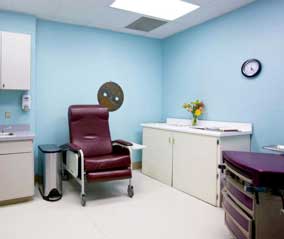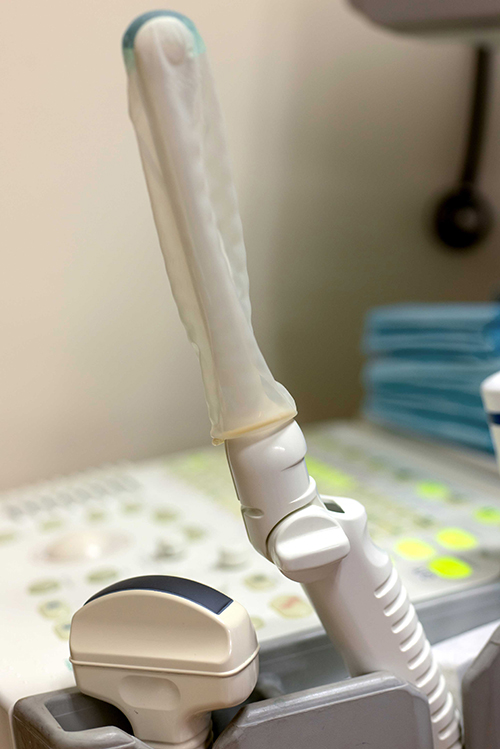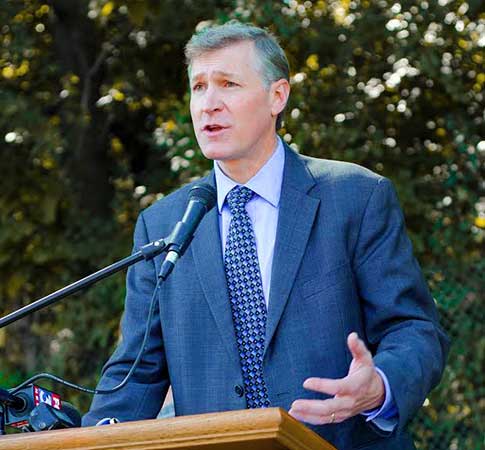

In her black Honda Civic, Angie Hayes picks up women in Houston she's never met before and drives them an hour to where they need to go: an abortion clinic — or rather, one of three abortion clinics that remain in Houston. Access is scarce in the sprawling Texas city, and it's the same, if not worse, all over the state, where women have been known to travel hundreds of miles to get the procedure done.
Many blame the restrictive Texas House Bill 2, or HB2, passed in 2013. More than 40 abortion clinics were operating in Texas before HB2 passed. As of October, only 19 remain. Clinics have shuttered because they didn't pass the requirements of the bill, which demands that doctors performing abortions at clinics have privileges at local hospitals that allow them to admit their patients in case of emergency. Another provision — which was temporarily halted in 2014 and is now in the hands of the US Supreme Court — stipulates that clinics must meet the same standards as hospital-like ambulatory surgical centers.
The Supreme Court heard arguments in March in a case called Whole Woman's Health v. Hellerstedt that challenges the constitutionality of HB2. A decision is expected sometime in June, which could have nationwide implications since Texas's HB2 is not the only bill of its kind.
Hayes started her volunteer driving organization in 2013, the same year HB2 passed, though the timing was purely coincidental. Rather, she launched the service — called Clinic Access Support Network (CASN) — in response to a pattern she noticed when she was volunteering as an escort at an abortion clinic. Because a woman isn't allowed to drive herself home after she gets an abortion, Hayes saw more and more women having no choice but to take cabs.
Today, Hayes is a 32-year-old teacher and graduate school student who has recruited nearly three dozen volunteers to drive women to and from abortions. Some weeks, CASN gives eight rides; other weeks, three rides.
If women are traveling hundreds of miles, CASN will pay for their bus tickets and pick them up. Hayes has seen women come from as far as Dallas — more than 200 miles away — because the waiting list at abortion clinics can be up to four weeks long.
Some women don't have family or friends they can confide in to ask for rides. Often, they don't want to discuss their situations and would rather stare out the window in silence. Rarely do women keep in touch after the abortion, but when they do, it's meaningful.
But Hayes doesn't do it for the gratitude; she runs the organization because without it, some women couldn't get abortions. "You can't choose to have this procedure without access to it," said Hayes. "So we try to make it accessible in whatever ways we can."

Clinic Access Support Network founder
Three in 10 women will have an abortion by age 45, according to the Guttmacher Institute, a prochoice nonprofit research group, but it's becoming much harder for them to do so.
The Supreme Court's upcoming decision on whether to overturn Texas's HB2 will have significant implications on the reproductive rights of millions of women since several states have passed, or are considering, restrictive laws that make abortion legal in theory but almost impossible in practice.
In February, for example, 23 states, including Florida, Alabama, Louisiana, and Tennessee, participated in a brief urging the Supreme Court to uphold the local hospital admitting privilege law in Texas.
If the Supreme Court rules broadly, the decision could transfer over to these states. (If it decides it narrowly, it could have an immediate effect only in Texas.) It's also important to note that with Justice Antonin Scalia's death, the Supreme Court case could end in a four-to-four tie. Such a result would uphold the lower court's ruling permitting the law, but the decision would not apply nationally.
Advocates of HB2 argue that the hospital admitting privilege law is in the best interest of women. However, reputable medical associations, including the American College of Obstetricians and Gynecologists and the American Medical Association, say it's unnecessary, since abortions are so safe: there is a less than 0.3 percent risk of a major complication following an abortion that might require hospital care. Still, many hospitals deny admitting privileges to doctors who perform abortions, forcing clinics to shut down.
It's the worst out of all abortion restrictions, believes Elizabeth Nash, who works on state issues at the Guttmacher Institute. "The law doesn't say, 'If you, a doctor, meet all the requirements, you can provide abortion.' It says, 'You can meet requirements but then a hospital has to make the decision,'" she said. "It's arbitrary, and hospitals don't want to get involved in the abortion debate."

Guttmacher Institute representative
Rebecca Terrell, the executive director of a Tennessee clinic called CHOICES: Memphis Center For Reproductive Health, agrees. "It's one of those things that's so frustrating because it sounds so innocuous — it sounds like common sense," she said. "But hospital privileges are a business relationship; hospitals grant that privilege to doctors that will give them business."
Because abortions have proven so safe, this becomes a dilemma. "If your practice is in first-trimester abortions, you will never have a patient that needs to go to a hospital," said Terrell.
Restrictions go beyond hospital admitting privileges, of course. Since 1973, states have collectively passed 1,074 abortion restrictions, 288 of them since 2010 when Republicans took over Congress.
Like Texas, 22 states have passed laws requiring abortion clinics to meet the same standards as ambulatory surgical centers. For instance, some specify the size of the procedure room or the width of corridors in order for gurneys to pass through. Other more drastic restrictions include color-coded janitorial closets and even what type of grass or vegetation may be planted outside.
"There is nothing in the literature that requires abortions to be done in an ambulatory surgery center," said Vicki Saporta, the president and CEO of the National Abortion Federation (NAF). "Most providers can't afford the renovations that can cost up to $1.5 [million] or $3 million."
In some states, like Missouri and Oklahoma, women must wait 72 hours after an abortion consultation to have the procedure. Other states have 48- or 24-hour waiting periods.
"With waiting periods, you could say, 'Does it matter?'" said Saporta. However, waiting periods are especially troublesome when the number of clinics is so scarce. "In conjunction with other restrictions, it means that women have to make more than one trip to the facility. Oftentimes they're already traveling hundreds of miles and they don't have the resources to take time off work or find child care. These barriers become cumulative."
Waiting periods affect not just the woman who wants to get an abortion, but also the other patients who need to be seen at the clinics. In Tennessee, the waiting period is 48 hours. Terrell, who runs the clinic in Memphis, said her clinic provides multiple medical services, such as fertility and miscarriage treatments and HIV testing. When a doctor has to meet with a woman two times instead of one for an abortion, it cuts into her time with other patients. "We are a nonprofit practice and we're here to serve the community, but we now spend a lot more time on abortion than we should."
The situation isn't much better in Mississippi, where doctors are required to spread information that is untrue or that they don't agree with. Willie Parker, one of the few abortion physicians in Mississippi and Alabama, can attest. In a documentary called The Last Clinic, about the only remaining clinic in Mississippi, we see Parker tell a patient, "I have to tell you, but I don't agree with it, that having an abortion can increase the risk of breast cancer . . . There's not a shred of scientific evidence to prove that." A 2013 workshop held by the National Institute of Cancer found that having an abortion does not increase a woman's risk of developing breast cancer, but Parker still has to tell women that it does.

If you're trying to get an abortion in Louisiana, Texas, or Wisconsin, you'll be forced to see an ultrasound image of the fetus while the provider describes it. And in Alabama, the Senate recently passed a bill that prohibits abortion clinics from being located within 2,000 feet of a K-8 public school.
One of the more draconian laws comes out of Indiana. In March, Governor Mike Pence signed a law requiring women to have a burial or cremation service for their fetus after getting an abortion or miscarrying. The law also says it's illegal for women to get an abortion if the fetus has a disability, like Down syndrome.
Nash said these restrictions are loopholes by lawmakers who would like to see abortion altogether made illegal. "What we see now are efforts designed to close clinics and decrease access without directly banning abortion."



It feels like every day, we wake up to a new headline about abortion restrictions in a different state. But is this part of a concerted effort by certain groups to end abortion across the country, rather than simply make it safer for patients?
NAF president Saporta believes so.
"There's no doubt. The [various states'] bills are exactly the same," she said. "This didn't happen by osmosis — this was a very calculated and coordinated effort to end abortion by putting up barriers that are sometimes too great for women to overcome."
She points to groups like Americans United For Life (AUL) that help draft antiabortion legislation that they then try to implement in as many states as possible. An investigation into the AUL by ThinkProgress found that the organization had indeed written parts of bills like the ones in Oklahoma and Texas that impose strict standards for abortion centers and require abortion providers to obtain nearby hospital admitting privileges.
One email uncovered by ThinkProgress that was sent to AUL supporters states that the group is responsible for one third (74) of the more than 200 state antiabortion laws passed since 2010.
"Antichoice groups are working with antichoice legislators to pass these restrictions under the guise of improving women's health," said Saporta. "They don't respect women's ability to make medical decisions with their physicians."
When asked if AUL was working with legislators to end abortion in the US, spokesperson Kristi Hamrick responded via email, "Americans United For Life develops constitutionally sound health and safety standards that protect women and their unborn children from an abortion industry that puts profits over people every time," she wrote. "It should be a national scandal that a woman getting an outpatient breast biopsy has the expectation of a high standard of medical care but a woman in an abortion clinic is abandoned to whatever an abortion clinic operator wants to sell."
Eric Scheidler is the executive director of the Pro-Life Action League, another group in favor of the laws. He said his organization is involved in advocating the measures by mobilizing legislators around the country to enact them. The Pro-Life Action League also holds protests at Planned Parenthood centers throughout the US and hosts prayer vigils outside abortion clinics.
"Generally our goal with these kinds of laws is to protect unborn children as much as we can within the limits of Roe v. Wade and to protect the women who want abortions — from everything from physical complications like infertility to the emotional impacts of abortion like higher suicide rates, regrets, and other psychological effects," said Scheidler.
When asked how he would respond to medical professionals who say abortion does not cause major health or emotional issues, he said, "I would refer them to the thousands of women who speak out about regretting their abortion. I would point them to the fact that every abortion ends in the death of a human being. It's primarily the respect for life of the child."
Scheidler's ultimate objective is to create a culture "in which we embrace the right to life of every person from the beginning of life to its end — that would include extending legal protection to children in the womb."
Terrell, who runs the clinic in Tennessee, called these so-called legal protections "completely bogus" because there's no health benefit to many of them, including the ultrasound laws.
"If they're worried about peoples' health, why aren't they policing colonoscopies or root canals, which have a higher risk?" she asked of the legislators who pass such laws. "It's hard to accept that they can even say those things with a straight face, because it's so clearly not true."
Dr. Dalia Brahmi, a board-certified family physician with specialty training in abortion and contraception in North Carolina, has the same opinion based on her experience with patients.
"Most of these laws are not medically necessary," said Brahmi, who is part of the Physicians For Reproductive Health network. "They are based on the assumption that somehow women don't have the capacity to understand their pregnancies or the consequences of their pregnancy."
Instead of making abortion care safer, Brahmi believes the laws make it worse because they delay access to care.
"Women are giving their decisions so much thought," she said. "To have an additional barrier, to have it regulated outside of a very intimate relationship between a physician and patient, puts unnecessary barriers there. My number one priority is all about the health and safety of women."
She also called the laws a blatant attempt to "get in the middle of the relationship between providers and patients." In North Carolina, where she practices, a law mandates that doctors send the ultrasounds of women having abortions to state officials if the woman is more than 16 weeks pregnant. The supposed purpose is to make sure doctors are complying with the North Carolina law that forbids abortion after 20 weeks.
"You would never send it to a politician assuming that they can read an ultrasound better than the doctor can — that's absurd," said Brahmi.
While many legislators have reiterated that the purpose of the laws is to protect women's health, Mississippi state Governor Phil Bryant has been direct about his intention when it comes to regulations on abortion. "On this unfortunate anniversary of Roe v. Wade, my goal is to end abortion in Mississippi," said Bryant in a CBS interview in 2014. (Bryant signed a law in 2012 that requires doctors to have local hospital admitting privileges for abortions in Mississippi.)
And in May of this year, Oklahoma legislators passed a bill that would make performing abortions a felony. Governor Mary Fallin vetoed the measure, but the state senator who wrote it — Republican Nathan Dahm — openly said he hoped the bill would overturn Roe v. Wade.
To understand how effective the laws are, consider this sobering statistic: five states — Mississippi, Missouri, North Dakota, South Dakota, and Wyoming — have only one remaining abortion clinic as a result of state restrictions.
Despite the landmark Roe v. Wade decision in 1973, many abortion restrictions have passed thanks to the 1992 Supreme Court case Planned Parenthood v. Casey. It says states can regulate abortion as long as they don't put an "undue burden" on the woman's right to it. A restriction counts as an undue burden if it prevents a large fraction of women from having an abortion.
However, that "undue burden" clause has been loosely interpreted, leading to these so-called TRAP laws, or Targeted Regulation of Abortion Providers. In the upcoming Whole Woman's Health v. Hellerstedt case before the Supreme Court, the judges will decide if the Texas HB2 restrictions provide an undue burden on women seeking abortions.
During the oral arguments from the case hearings in March, we got a preview of the justices' leanings. "There is very little specific evidence in the record in this case with respect to why any particular clinic closed," said Justice Samuel A. Alito, Jr., explaining that Texas clinics could have closed because of unrelated funding cuts.
However, Justice Elena Kagan said it was evident that the ambulatory surgical center requirements of the law forced clinics to shutter. "It's almost like the perfect controlled experiment as to the effect of the law, isn't it?" she asked. "It's like you put the law into effect, 12 clinics closed. You take the law out of effect, they reopen."


who had an abortion in grad school


In August 2014, 27-year-old Amanda Ward was in her second week of grad school when she found out she was pregnant. She had been taking birth control pills. In fact, 51 percent of women who have abortions had used a contraceptive method in the month they got pregnant, according to the Guttmacher Institute.
Ward lives in Wisconsin, one of the states that requires an ultrasound. The law there also requires a 24-hour waiting period between the time you have your first abortion consultation and when you can have an abortion. But Amanda didn't need any time.
"I knew right away that I needed an abortion, that it's what I had to do," said Ward. She was making $12,000 a year and wanted to finish her graduate degree before having kids. Her boyfriend supported her decision, and the two are still together today.
During her first appointment at Planned Parenthood confirming her pregnancy, Ward said the physician gave her information sheets filled with false facts.
The literature said that if you have an abortion, you might experience infertility or that it might cause breast cancer. The doctor told her the information was incorrect but that he had to give it to her by law. (Here it's important to remember the National Institute of Cancer found having an abortion does not increase a woman's risk of developing breast cancer, and the Mayo Clinic states that abortion isn't thought to cause fertility issues.)
Ward had the abortion a week and a half after she found out she was pregnant. That's because this particular Planned Parenthood in Madison only had staff on site to perform abortions one day a week. She was six weeks along by then — the fetus was one centimeter long.
Before the procedure, Ward was forced to do something she dreaded: have a transvaginal ultrasound, which is performed through the vagina. She was told it was the only way they'd be able to detect a heartbeat.
"They told me there was a heartbeat; I looked away not because I felt bad about the decision, but because I felt like I shouldn't be made to look at that," she said. "I don't feel like the trace of a person at six weeks makes them a person."
Despite her protests, the physician told her it had to happen. It was the only point in the abortion process in which she cried, because she felt like it was invasive and unnecessary.
"I felt frustrated that I had to go through it, that I had to jump through these hoops to get this simple procedure done that I knew that I wanted."
Ward chose to have a vacuum procedure done as opposed to the common pill procedure. The entire process took about 10 minutes.
Although she didn't grapple with the decision, she said it was still an emotional process. "It made me think for the first time in my life about whether I really want to have children. Would I make a good mother? Do I want to settle down with my partner, start a life together?" she said. "I think that's another misconception about abortion: that you're not supposed to feel anything about it, that you're not supposed to care, that you're supposed to forget about it."
Ward graduated this month with a master's degree in public policy and a focus on women's health policy. She doesn't regret her decision.
"I wish that people understood that women are very capable of knowing what's right for themselves and for their families. It's complex and emotional, even if you are prochoice," she said. "It's not just about, 'Oh, I don't want to have a baby.' It's about the quality of life you want your child to have. When you don't have the proper resources to parent, when you don't have enough funds to make rent or pay groceries, that's not the life a child should have."
More than a thousand miles away in Dallas, Jasmyn H. faces a similar reality. The 27-year-old had an abortion in April but drove all the way to Jacksonville, FL, for it. (Jasmyn is her middle name, used at her request to protect her identity.) Jasmyn — a single mother with two boys, ages 2 and 4 — had also been on birth control: the Depo-Provera shot. She had already suffered a high-risk pregnancy when carrying her youngest son; after two emergency surgeries, she was put on bed rest for three and a half months. As a result, she had to leave her job in retail and wiped out all of her savings. Another pregnancy meant fear of the same.
"There's no way I would be able to keep the job and support my kids," she said. "I wouldn't be able to work."
In Texas, which also has a 24-hour waiting period, doctors told Jasmyn she would have to go through multiple appointments before she could have an abortion: the first to prove she was pregnant, the second for a consultation about all her options. Only then could she schedule the third appointment to have the procedure done.
"I don't have that kind of time — every single day counts," she said.
So, at nine weeks pregnant, she made her way to Florida, where she has a friend who also had an abortion and said the process was relatively easy. What Jasmyn didn't realize was that Florida also had a 24-hour waiting period — a law that didn't exist when her friend had her abortion years ago. (Since Jasmyn had her abortion, this provision has been suspended.)
Instead of having the procedure done on a Friday like she had anticipated, Jasmyn had to wait until Monday to take the first of two abortion pills, which meant more time off and more money lost. (The first pill causes the embryo to detach from the uterus; the second, taken a day or two later, forces contractions, and the embryo expels from the uterus.)
Jasmyn had wanted to have an abortion when she found out she was pregnant with her youngest son two years earlier, but she felt pressure from her family, friends, and online comments that said she would be killing a child if she had an abortion. After all she went through, she regrets listening to them. "I love my son, but I still wish I had had the abortion," she said. "I just had too much time to think about those outside influences. I don't need that — what I need is someone who's in my corner helping me do this, not badgering me not to do it."
This time, when she got pregnant, she listened to herself and no one else — not even her former self. "I used to be prolife," she said. But this time, "I was able to understand more."
For Dr. Brahmi, who works in North Carolina, stories like those of Ward and Jasmyn are all too common. She's cared for grad students, teenagers who were raped at school, women who have children in intensive care, and single women whose partners abandoned them to deal with their pregnancies all alone.
"I can visualize all these people — they're human beings," she said. "When I think about my patients who are juggling complicated life circumstances, I have a relationship with them, I know they are making sound decisions for their families. So to have politicians try to get in the exam room — it's insulting."
National Abortion Federation CEO

Many women who use Hayes's volunteer driving service do the exact same thing when they get in the car.
"Their first inclination is to tell you how it happened and why they need this," said Hayes. "Society puts so much judgment on this thing — we're here to support your choice no matter what."
That choice might not always be respected simply because people don't understand it.
"Nearly one million abortions take place in the country per year," said Nash from the Guttmacher Institute. "That means it is your friend, your sister, your mom. But we don't talk about it, which means people don't realize how many people have had an abortion."
Saporta, the NAF president, agrees. "It is one of the safest and most common medical procedures provided in this country," she said. "Most people don't understand one of those two things because of the stigma that antichoice politics have put around abortion care."
Often, for the prolife groups, the focus lies not on the women who have abortions but on the life of the fetus. Because of that, many people mistakenly assume prolife groups share an animosity toward women who want abortions, said Scheidler from the Pro-Life Action League. "Our central challenge today is to humanize the unborn child," said Scheidler. "We can look at a young woman in a difficult situation with financial hardships, and it's easy to see the difficulty the untimely pregnancy poses for her. But it's harder to sympathize with a tiny unseen child whose life hangs in the balance."
However, prochoice activists argue that women are altogether ignored. "They don't want people to think about the woman and her circumstances and where she is in her life," said Nash. "The woman is the afterthought."
And that can be dangerous. Women in Texas are inducing their own abortions, and the number is highest among those who don't have easy access to the procedure.
"Whenever you make a diagnosis, you want to provide care as early as possible," said Dr. Brahmi. Same goes for abortion. "We see much higher rates of unsafe abortions where there are restrictions that make it harder to access."
In her medical experience, women are typically set on their decisions to terminate the pregnancy.
"Women will always need abortions," said Dr. Brahmi. "We need to decide as a society if we care and respect them enough to promote their health and safety and offer basic care."
This right to access and care should be at forefront of the issue, believes Nash. "What is more fundamental than figuring out when to have children?"
1 in 3 Campaign: A campaign that seeks to bring awareness to abortion by encouraging women who have had abortions to tell their stories.
Documentaries:
- After Tiller by Martha Shane and Lana Wilson (available on Netflix)
- Vessel by Diana Whitten (available on Netflix)
- 12th & Delaware by Heidi Ewing and Rachel Grady (available on HBO)
- The Last Clinic by Maisie Crow (available on Vimeo).
Find Your Representative: A tool that helps you look up and contact your local representative about the future of abortion legislation.
Guttmacher Institute: A prochoice nonprofit research group that provides detailed information about abortion laws in each state.
Informational downloads courtesy of the National Abortion Federation: an explanation of medical abortion, a guide to abortion safety, facts about the abortion pill, information about abortion after 12 weeks, and more about crisis pregnancy centers.
National Network of Abortion Funds: A database of local funds that provides financial assistance for abortion services.
Remarkably Normal: Abortion Stories From the 1 in 3 Campaign: A national play about the reality of women's abortion experiences.
Whole Woman's Health: A privately owned healthcare and advocacy organization that runs several gynecological centers around the United States. Its online FAQ section explains some of the most common questions and myths surrounding abortion.
Backline: A free hotline that provides counseling and advice on abortion, adoption, pregnancy, and parenthood.
Exhale: A free hotline that provides unbiased after-abortion support and counseling.
National Abortion Federation Hotline: A free anonymous hotline for information about abortion and unintended pregnancy. Call 1-800-772-9100 .
Planned Parenthood Healthcare Center Locator: A service that helps you find the nearest Planned Parenthood in your area.
Additional reporting by Annie Gabillet and Chloé Durkin
Design and data visualization by DeAnna Caggiano and Morgan Kennedy
Developed by Julie Driscoll; Produced by Sabrina Eldredge

